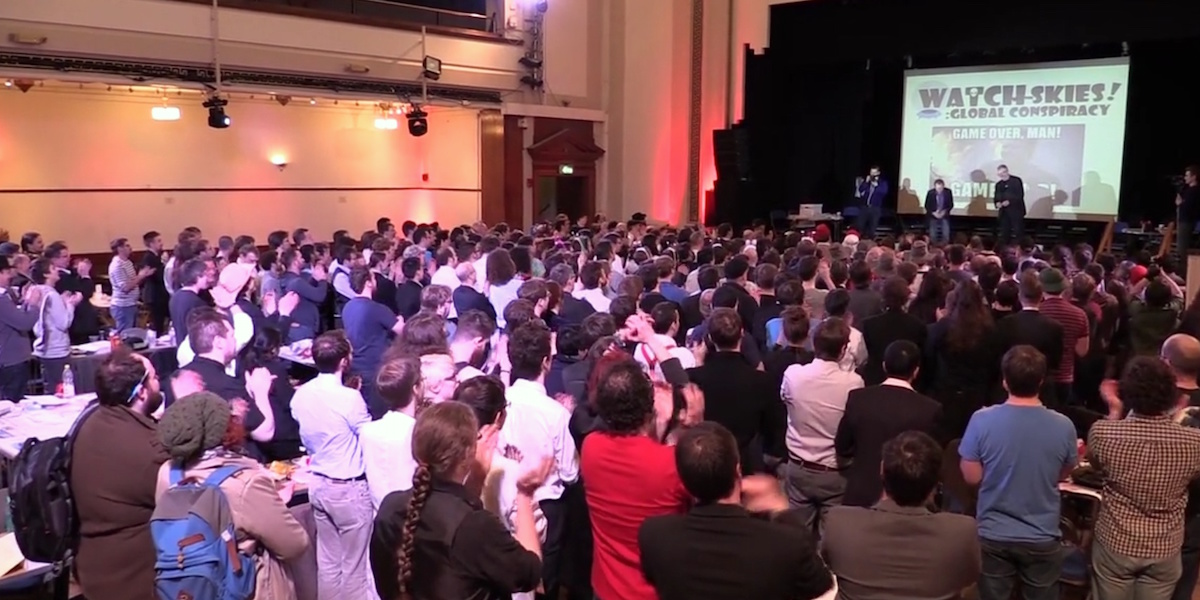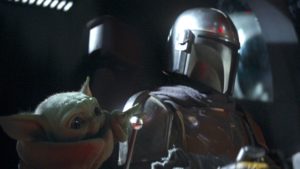
Gaming can run the gamut of scales. From the solo paperback RPG’s like Fighting Fantasy or a computer game, to a crowded table with seven or eight players huddled around for a session of Secret Hitler or Twilight Imperium. This can even be taken to the extreme, with special convention
level games boasting tens or even hundreds of players.
Megagames are an interesting part of that world and whilst it took our friends at Shut up and Sit Down to make them “famous” with their excellent video “We’ve Played a God-Damn Megagame”, they’ve been around for a long time (the main community in London running them since the seventies). The subjects are as varied as the players, from WW2 strategy to American High School dramas, the common concepts are the scale. The more players that are involved, the more scope there is for controlled chaos, as well as the creeping feeling that you are only looking at a small piece of the puzzle. Communication becomes a massively important tool for a good megagame player and a common piece of advice given by the veterans of the community is “if you’re not sure what else to do, talk to someone”.
Typically, there are between thirty and eighty players in a megagame, usually working in teams of four or five. Watch the Skies, many people’s entry point into mega-games, has the classic structure of a Team Leader, a Military or map player, a science player and a diplomatic player who’ll spend much of their time arguing with people in the game’s version of the U.N. This is a fairly typical structure for a megagame, but there are lots of variations including those games where the team composition is much more malleable or that there are larger teams. The Game of Thrones inspired “Everybody Dies” has a high level of player mortality seeing players “respawn” in new roles and therefore in new teams.
Megagames are typically run in village halls and other reasonably easy to hire places, though they’ve been known to happen in old churches and schools as well as hearing about much more esoteric locations. On your arrival, you’ll typically be signed by someone at the door who’ll be keeping attendance and shown to your table. This is usually where briefing materials are found, ranging from just a page or so of A4 to a whole booklet which, with a little luck, you’ll have had in virtual form in advance. There’ll be tables and chairs in the room which can sometimes seem to be laid out like a cross between a village rummage sale and a political conference. As players arrive and the room fills up, you’ll start to get a feel for the energy that the game will have. Of course, there can be a lot of variation on a theme thanks to the broad and developing scope of design in megagames.
Megagame design has been evolving over the years, gaining sophistication as it gains a wider fan-base and a number of new designers who can count on feedback from a supportive and passionate community. I spoke to John Mizon who runs South West Megagames, based out of Cheltenham, about what is the most important part of megagame design:
“I think the central challenge is getting the balance right between simplicity and complexity in the game’s rules and systems. You’ve got to have enough in there that the players can make significant changes and impact what’s going on, but not so much that players get confused, misunderstand things, or interpret things differently to the other players. Avoiding being too complex is especially difficult when you have to factor in the already existing complexity of playing a game of this scale”
There’s a wide range of styles for “control” too. Control is the term used for the GM’s who run the games, brave people willing to take on a room full of determined gamers over a full day and to operate on brief mouthfuls of food and caffeine (or at least that was my experience as Control). Bravest of the brave are those running Game Control who have often literally built the game from the ground up, printing counters, maps and cards, assembling them and then carting them, usually in suitcases, to the game site.
The production standards continue to rise in mega-games with established mega-game groups like Megagame Makers (in London), SW Megagames or Pennines Megagames (in Leeds) continuing to improve the design and production of their games. There’s also an international community of mega-games with some of the productions showing a great deal of technological prowess.
Playing a megagame is a unique experience with the gameplay potentially ranging from pure roleplaying to something more like a board game and anything in between. There’s a lot of noise, a lot of movement and whilst it’s not even close to being a LARP, you can expect to spend a lot of time talking, walking and moving around. There’s typically no lunch break with players snatching a bite to eat when they have time or having “working lunches”. For some, the shock of the noise and movement can be exhausting but game-control is very understanding if you need to take a break and get away for a bit.
Another unique feature of megagames is that there is generally no clear victory condition. Your team and perhaps even your character will have their own objectives. But the real fun and joy of a megagame often comes from seeing how your interactions affected the tapestry of the game, which will usually come out as part of the post-game debrief. It’s not uncommon for even team leaders and game control to be totally unaware of schemes and storylines playing out on the flanks of the game. A personal example of this was during the Zombie apocalypse game “Urban Nightmare”, which saw my National Guard commander become a taxi driver to the rich and powerful, ferrying them to safety or just away from the risk of prosecution using my helicopters. I came away from the game a rather rich man. In the same game, a Mayor of a small town won huge plaudits and the governorship by personally leading the fighting against the undead in hand to hand combat.
Again, speaking to John Mizon, he described his favourite aspect of megagames:
“I think one of the core reasons I enjoy them so much is the storytelling that comes from the structure. The narrative isn’t only being controlled or affected by just one person (or a few people) – the narrative is
the end result stemming from the choices of a large number of people who are all influencing each other. The product of that kind of storytelling feels really rich and deep to me”.
As for what comes next? John had a few words on this subject too:
“I haven’t any faith that I can answer this with any accuracy! So take everything I have to say with a pinch of salt. As far as I can tell, the near future of the megagame community is that it’s still growing. There’s only been a small amount of mainstream gaming coverage – including that Shut Up & Sit Down video – so it’s relatively unknown. Even if they’ve never played it, most people know what board games, or Dungeons and Dragons, or LARPing is, but whenever I tell people about megagames for the first time, 99 times out of a 100, it’s the first they’re hearing about it. I’ve been running megagames for almost five years now, and I still steadily pick up new players who love the genre after one game, but had previously never heard of it. That answer is a little boring though – the more interesting one would be to mention the more experimental stuff. Right now, due to the pandemic, people are doing some online megagames, which introduces a lot of new technological options, and there are some interesting new possibilities there. There’s also a number of people trying out these scaled-down megagame experiences with somewhere between 10 and 20 people (give or take). The idea being to make the game easier to play and understand, but while still keeping some of that flavour of information management and complex storytelling”
If you’ve not played or even heard of megagames then, once we go back to normal (definitions of normal on a postcard!) you will have ample to choose from to get your feet wet! Or you can keep your eyes open for online megagames and get a feel for how the chaos beautifully unfolds. Hope to see you, even if it’s in virtual form, in the near future!
We’ve taken the liberty of supplying some links to UK megagame organisers below. Feel free to take a look at the nearest event to you!
South West Megagames
Pennine Megagames
Megagame Makers UK
True North Megagames (Facebook Link)
Horizon Megagames
Diversionary Games
Crisis Games (Facebook Link)








If you’re interested in playing a megagame, we’ve got a calendar of all the megagames happening around the world by region and online games too. Check out https://www.megagameassembly.com/calendar-view for more information!